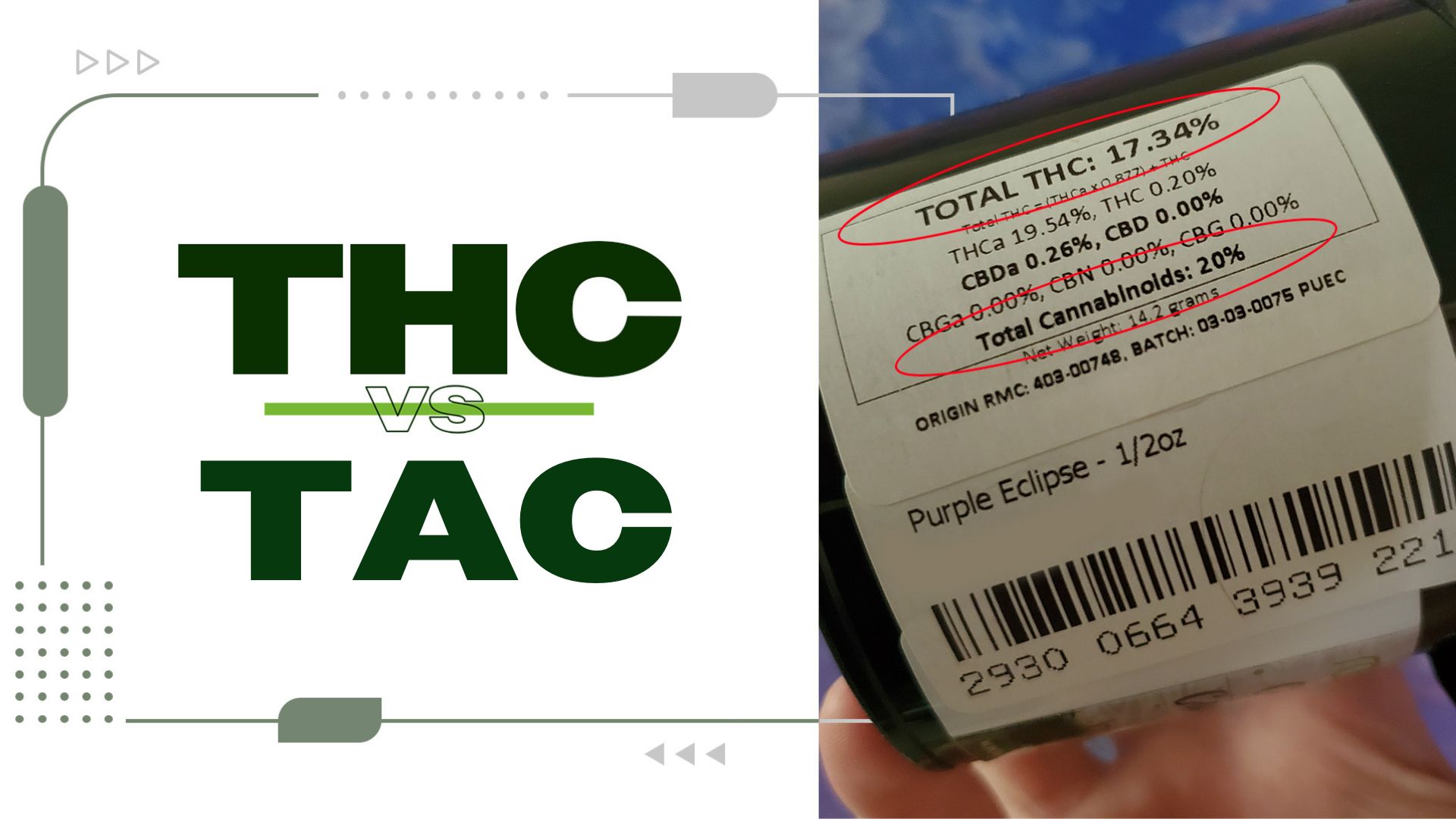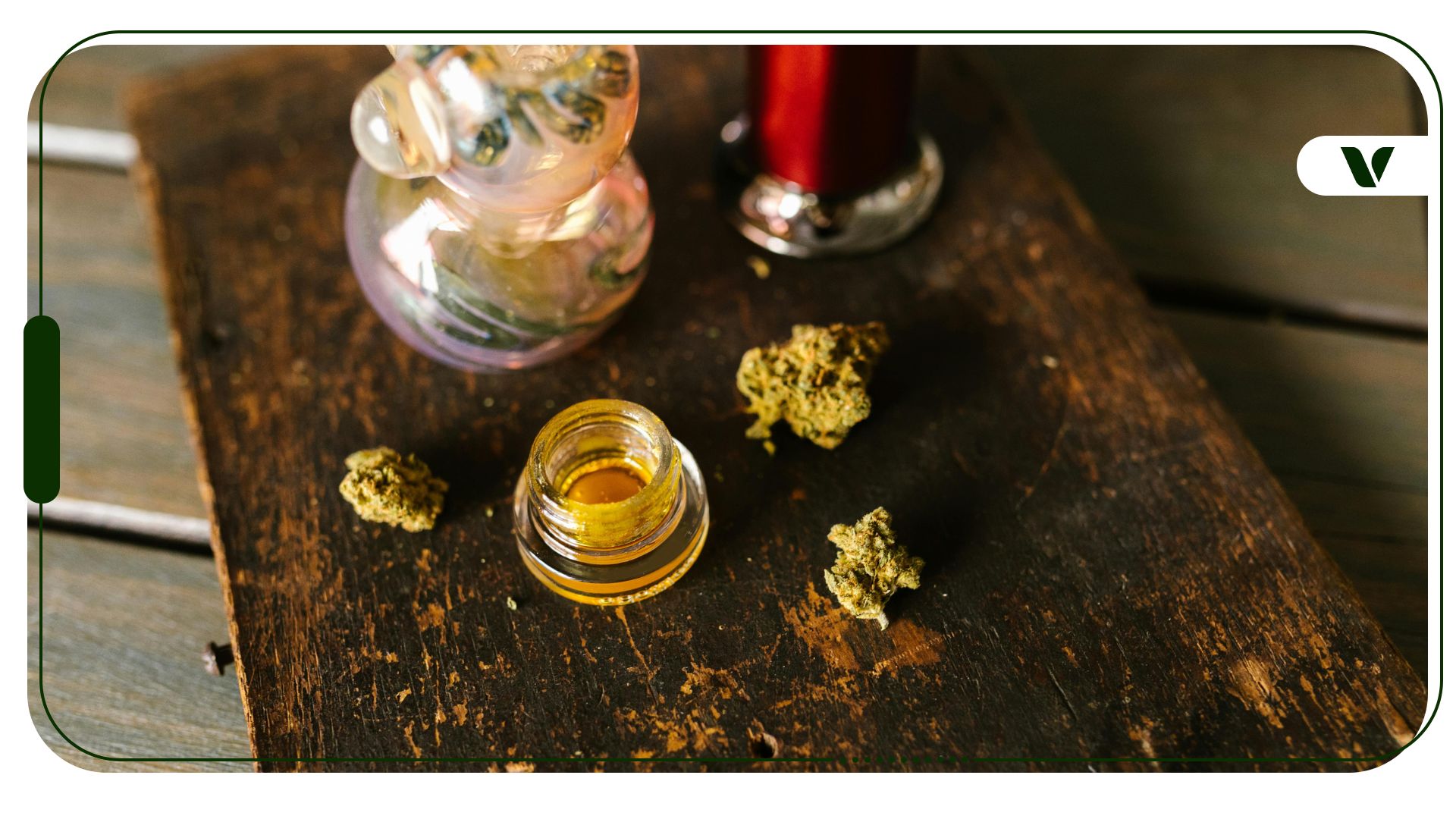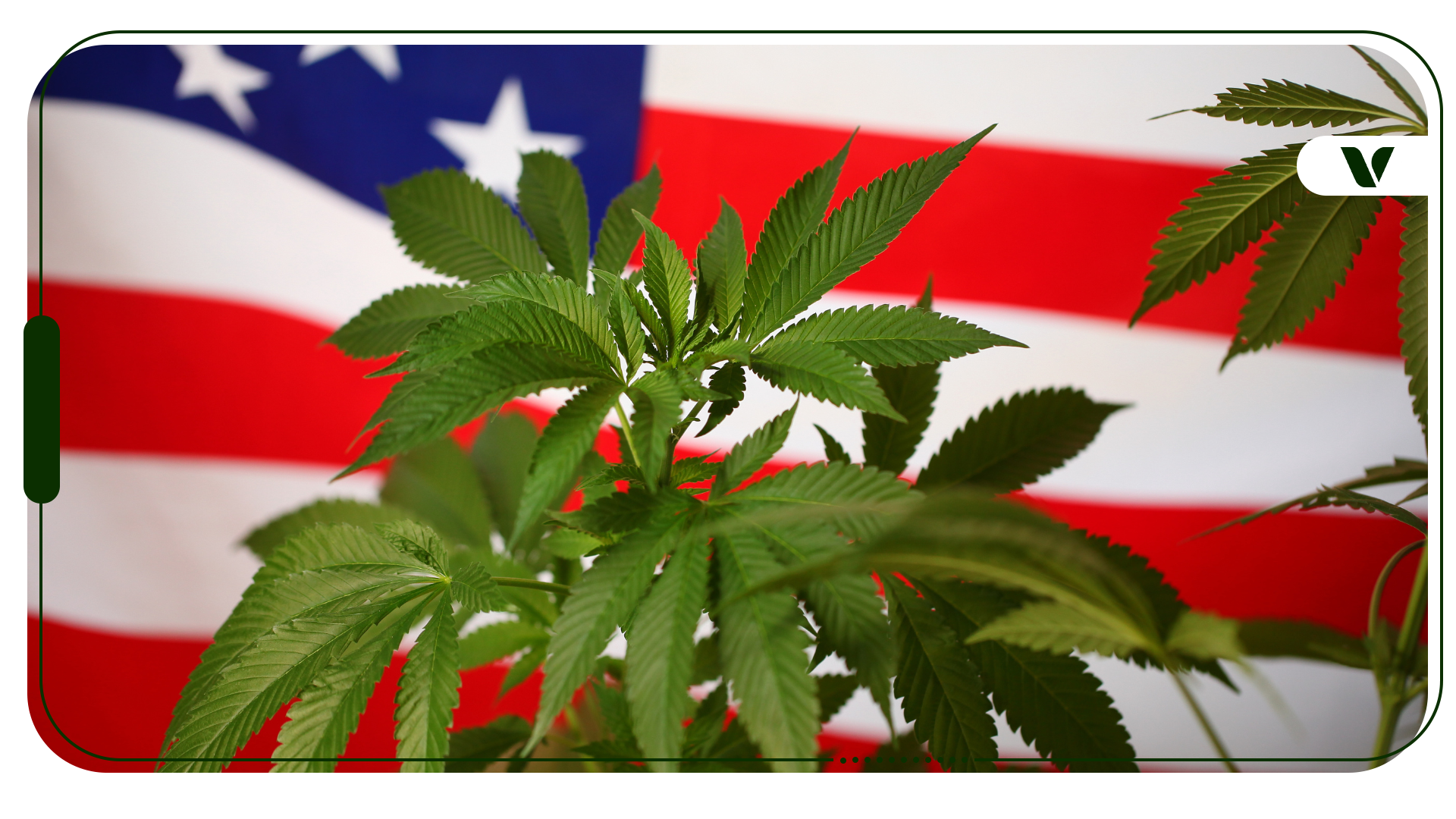When choosing a cannabis product, it’s common practice for people to check the THC concentration to get an idea of a product’s potency. However, there is often a tendency to fail to give attention to another important reading on a cannabis product label: TAC. But what does TAC stand for, and what kind of information is represented by the TAC figure? Are there similarities and differences between THC vs. TAC?
This article will clear up the difference between what these two indicators represent on a cannabis label, so you can go forward with making informed decisions when shopping through your cannabis options.
Gaining a better understanding of TAC may even inspire you to try out something new with your next cannabis purchase to enhance your overall experience!
THC
THC, or delta-9-tetrahydrocannabinol, is a compound found in the Cannabis sativa plant that is primarily responsible for the psychoactive effects of cannabis. As such, THC produces relaxing or euphoric sensations typically associated with marijuana use. THC belongs to a category of substances known as cannabinoids, of which there are almost 150 others with different characteristic effects.
Since THC delivers the ‘high’ sensation associated with cannabis, the potency of the cannabis product is regularly measured in terms of this cannabinoid, because THC largely dictates the intensity of the experience. Overall, a label’s THC reading gives you an idea of how potent the psychoactive experience will be from consuming a particular product.
THC vs. THCA
Total THC doesn’t only encompass the amount of delta-9-THC in a product, but it may also include the final amount of THC produced by the conversion of THCA into THC. THCA, or tetrahydrocannabinolic acid, is a non-psychoactive compound found in raw cannabis.
In fact, freshly harvested cannabis contains high levels of THCA and little to no THC. But when THCA is exposed to heat, as in when you smoke cannabis flower, it converts into THC through a process called decarboxylation. This process releases the intoxicating properties of THC, and this THC is counted in the overall total THC concentration in smokable cannabis flower.
Note that THCA can also be consumed by other means without conversion into THC. And on its own, THCA is said to provide anti-inflammatory and relaxation benefits without psychoactive effects.
Yet, there are various other “minor” or rare cannabinoids other than THC that also contribute potential effects or therapeutic benefits when consumed. This is what makes understanding the TAC useful. TAC not only counts the amount of THC in a product, but it also accounts for the other cannabinoids that are present.
These other cannabis compounds can add layers of complexity to the cannabis experience, so the TAC metric provides the concentration of an entire spectrum of active cannabinoids that contribute to the experiences produced by cannabis use.
TAC
TAC, on the other hand, stands for “Total Active Cannabinoids,” and it indicates the content of all active cannabinoids present in a cannabis product. THC differs most significantly from other TAC compounds in that it primarily induces psychoactive, euphoric effects by binding to CB1 receptors in the endocannabinoid system (ECS).
Why You Should Get Your Medical Marijuana Card
Veriheal has satisfied millions of patients nationwide by giving them access to these benefits
- Larger purchase limits
- Peace of mind
- Enhanced legal protection
- Access to higher potency strains
- Save up to 25% on cannabis purchases
- Skip the line at the dispensary
These receptors are abundant in the brain. But there are also CB2 receptors, and various other cannabinoids can affect these receptors and produce different benefits. Some cannabinoids, like CBD, can also increase the levels of our body’s endocannabinoids.
Cannabinoids also work extensively outside the ECS. For example, outside the ECS, CBD may have as many as 65 other molecular targets in the body. Minor cannabinoids can also work on many of the same ones.
The figure in the TAC content includes THC along with other cannabinoids present in the cannabis plant, such as cannabidiol (CBD), cannabinol (CBN), and cannabigerol (CBG). As such, TAC provides information about the combined potency of these compounds in a product. While THC concentration represents the amount of a single cannabinoid psychoactive among many, non-impairing ones, TAC is a summary of all bioactive cannabinoids that are overall present in the cannabis product.
By encompassing the full cannabinoid spectrum, the TAC figure provides a comprehensive measure of the potency of your cannabis product. This is because TAC can illuminate the broader picture of how a cannabis product may affect you beyond the effects of THC alone.
Higher TAC values often offer unique effects produced by complex interactions between various active cannabinoids. The variety of cannabinoids and their balance of concentrations can influence the intensity and therapeutic benefits achieved in the experience.
The Entourage Effect
The comprehensive measure provided by the TAC reading is important when we consider the ways multiple cannabinoids may interact to produce enhanced therapeutic benefits. The “entourage effect” refers to this phenomenon, where different cannabinoids combine and result in unique effects.
Variations in how cannabis effects can manifest in the presence of certain cannabinoids largely occur because of the many ways different cannabinoids can interact with the body’s ECS and more. From nematodes and urchins to whales and human beings, all animals have endocannabinoid systems.
The endocannabinoid system encompasses a variety of specialized receptors, enzymes, and endocannabinoids (cannabinoids produced naturally by the body). The ECS is a critical system that helps regulate physiological processes that affect sleep, mood, and appetite, among others.
Since non-THC compounds represented by the TAC amount have different binding affinities in the body, the presence of these other cannabinoids may induce effects that are different from what you would usually expect to have from a THC-only experience.
CBD, for example, has a low affinity for CB1 and CB2 receptors, but it can reduce the high and side effects of THC like anxiety. Also, its interactions with other non-cannabinoid receptors result in particular therapeutic effects. Hence, taking a gummy that not only contains THC but also CBD in significant proportions, may have a distinct relaxing effect as the different cannabinoids act upon the body in their characteristic ways.
Final Thoughts
It is important, and interesting, to note that scientific research on cannabinoids is still relatively underdeveloped and in the process of new discoveries. This is primarily because researchers have been unable to do extensive research on these compounds because of the strict prohibition standards surrounding the use of cannabis that exist internationally. It’s also because minor and semisynthetic cannabinoids didn’t really become popular or easily harvestable until the passage of the 2018 Farm Bill.
Nevertheless, further research is underway. And potentially, with President Biden’s passage of the Medical Marijuana and Cannabidiol Research Act (MMCREA) in 2022, researchers in the U.S. may see more opportunities to obtain licenses and products to conduct more studies. Hopefully, this will further expand our knowledge of these cannabis-derived compounds.
Author, Share & Comments








